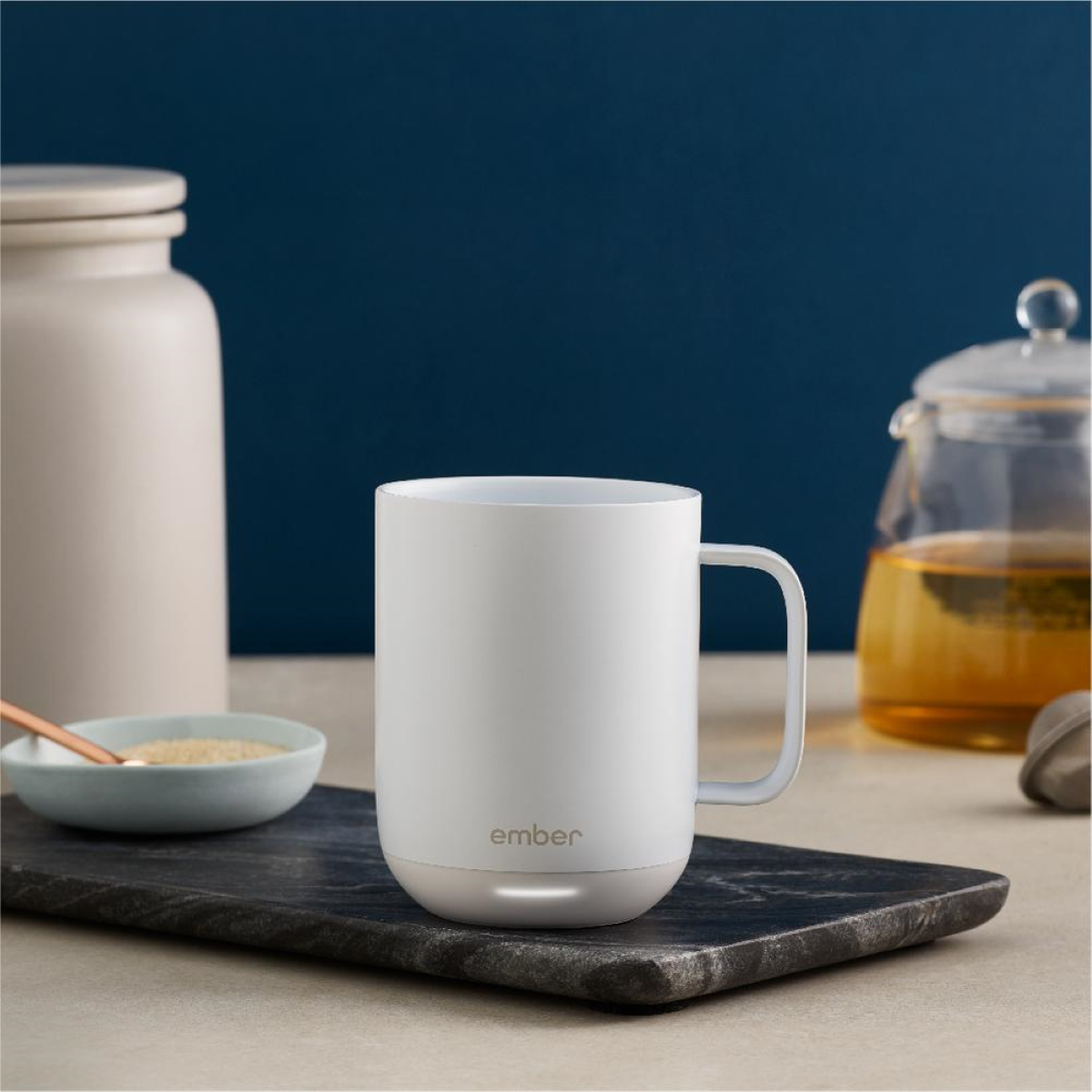
"It was a pain in the ass," says Martin Gschwandtl 1, an industrial designer at Ammunition. With the help of design firm Ammunition, Alexander turned his ideas into a handsome mug. Alexander says even in his early prototypes, he was able to keep the temperature within one degree from top to bottom. That displaces hotter liquid, moving it up to the top, where another element on the other side does the same thing. So Ember uses cooling and heating elements up the sides of the mug-it activates the highest submerged element, and cools that spot until the cold liquid begins to fall. Eventually, Alexander realized the solution was to create a convection current, like a radiator or a pot of water. But heat rises, and so he'd simply be cooling and re-cooling the same cold liquid while the stuff at the top stayed hot.
#Ember coffee cup full#
In his initial tests, Alexander put thermoelectric coolers on a vessel full of liquid, pulling out all the heat energy. Heating and cooling things is easy, but doing so uniformly poses a challenge. You can picture the hokey infomercial already.


"We all know how much it sucks to have burning-hot coffee or lukewarm coffee," he says. And with coffee, Alexander had a perfect way to pitch his product. They're already buying burr grinders for their kitchens, Blue Bottle pourovers on the go. Those people are increasingly willing to spend money to get better coffee. But Ember CEO Clay Alexander decided to start with a mug for a few simple reasons: One, everybody drinks coffee, many of them several times a day. You can imagine all the ways it might be applied: in dishware, baby bottles, beer steins. The technology inside this mug has implications far beyond coffee. Ember keeps my coffee exactly right, for hours on end. (Ember defaults to 135, which I guess is a neater number.) It's hot without scalding, and leaves enough room for you to taste the flavors of the coffee rather than simply broiling your taste buds. For coffee, science says it's 136 degrees. See, every beverage has an ideal temperature for consumption. Is spending $80 on a mug a ridiculous indulgence, much like $14 avocado toast and those super-expensive candles that supposedly smell like your hometown? Yes. You choose the exact temperature in Ember's companion app, or pick from a preset. The mug keeps 10 ounces of coffee at whatever temperature you want, for as long as you want. Over the last couple of weeks, the Ember Ceramic Mug has changed all of this. I usually fail, and end up tossing (or begrudgingly chugging) about a third of my mug's contents when I head back for a refill. Then begins a careful countdown: I have to wait a few minutes for the joe to cool, then drink it as fast as possible before it gets cold.

I fill it to the brim with the delicious Stumptown brews WIRED provides and bring it back to my desk. My daily coffee routine goes something like this: I arrive at the office, drop my bag next to my desk, grab my mug, and head to the kitchen.


 0 kommentar(er)
0 kommentar(er)
